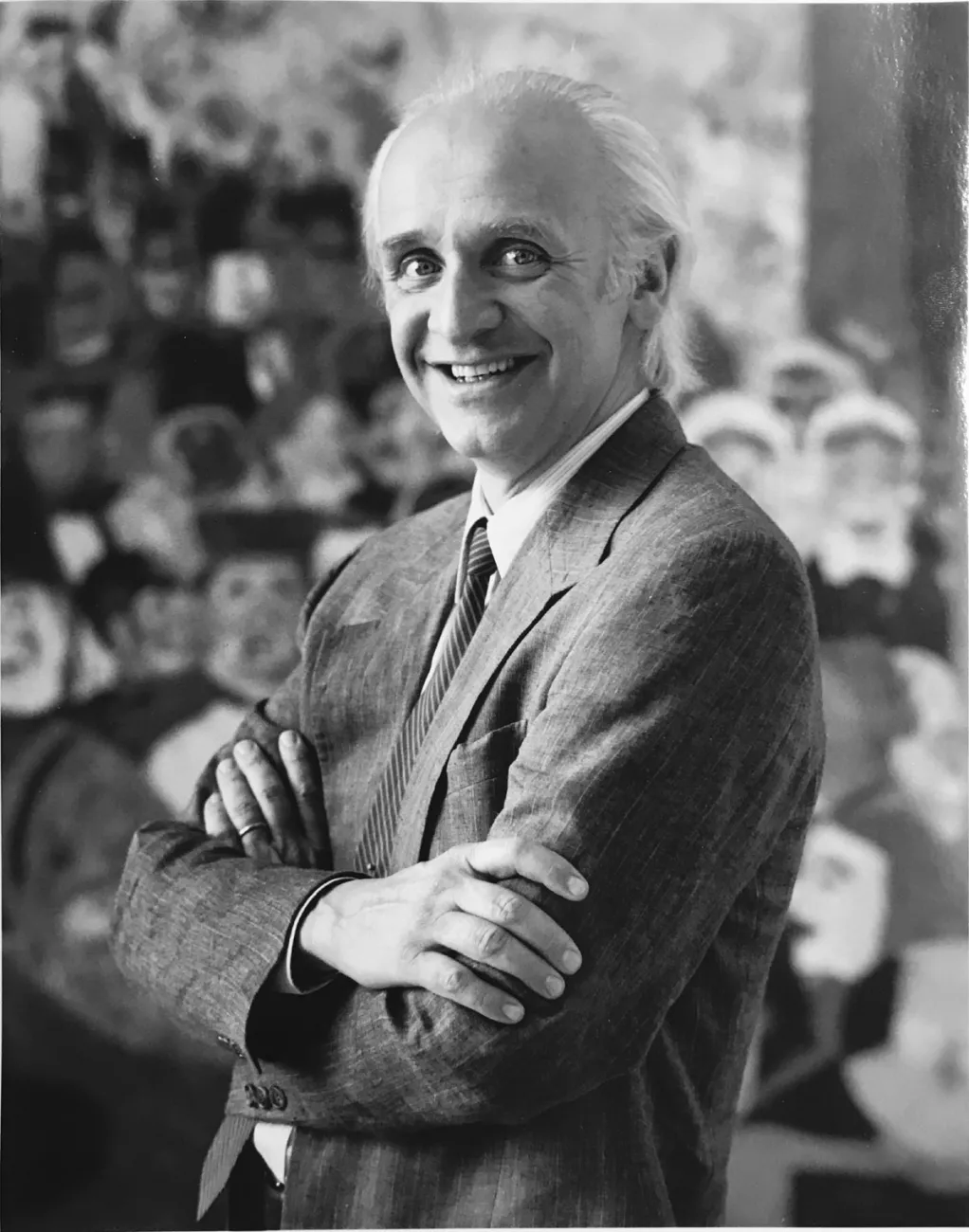Obituary: Andrea Rothe
Submitted by sharragrow on 27 Jun 2018

In Memoriam Andrea Rothe
It is with great sadness that we announce the passing of Andrea Rothe who served as Senior Conservator of Paintings at the Getty Museum for over twenty years. Born in Italy of German parents, he studied conservation in Florence and Vienna and was an assistant to the artist Oskar Kokoschka before becoming a private conservator for the Italian state. He worked on a number of important paintings at museums and churches across Italy, and eventually became head of the prominent paintings conservation studio housed at the Pitti Palace. Equally notable was his role in saving many paintings damaged in the Arno flooding (1966) as well as his presence at many professional conferences, which made him an international figure in the conservation field.
He was hired by the Getty in 1981 and worked on many of the Getty’s greatest acquisitions of that time including paintings by Titian, Dosso Dossi, Fra Bartolomeo, Mantegna, Rembrandt, and Renoir. His prior professional experience and global reputation meant that his impact at the Getty was profound. He was instrumental in bringing many international conservation leaders to the Getty to weigh in on important policies being developed at that time, and he was involved in a great number of diverse Getty activities including the 1995 Museum/GCI “The Structural Conservation of Panel Paintings Symposium” (a forerunner of the Panel Paintings Initiative), the acclaimed Dosso Dossi exhibition, and research on climate controlled show-cases.
His close working relationships with curators, conservators, scholars, scientists, and students, and his incredible sensitivity to the artists whose work he was conserving, made him an outstanding colleague. Everyone who worked with him, including the many guest conservators and graduate interns, would agree that Andrea’s remarkable professionalism was equaled by his great sense of humor and comedic talent. His zany view on the world will be remembered and missed by all who knew him.
Yvonne Szafran
Senior Conservator
Head, Paintings Conservation
J. Paul Getty Museum
A Remembrance:
Andrea’s personal background is fascinating and helps to explain the remarkable wisdom and perception with which he was to practice his profession. He spent most of his childhood and adolescence in New York, returning to Europe with his family only after the War. The Rothes settled in Florence renting a small villa above the city in a locality called La Gressa. Andrea, an artist at heart, began painting and eventually joined the circle of Oskar Kokoshka in Salzburg. By the time our paths crossed early in 1959, Andrea had returned to Florence and was already on his way as an apprentice restorer at the Uffizi. At that time the conservation facilities of the Florence Soprintendenza were scattered in several locations: at the Vecchie Poste (the former Central Post Office at the rear of the Loggia dei Lanzi); at Palazzo Pitti; and in a large space at the ground level of the Uffizi Gallery’s northern wing. Andrea worked at the last location under the supervision of Leonetto Tintori who had achieved fame as a conservator of affresco wall paintings.
As Florence was recovering from the 1966 catastrophe (and with Andrea part of those heroic efforts) J. Paul Getty was still alive and well in London. Meanwhile, Andrea
stayed on at the Uffizi with Tintori, working primarily on easel paintings. He would have greeted with total disbelief any thought that he might one day emigrate to California and that his and Getty’s paths would intersect. And yet that‘s what destiny had in store when, one day in 1976 or ’77, I received a call from Burton Fredericksen, a scholar and administrator who had been associated with Mr. Getty’s art interests since Fredericksen’s days as a graduate student in the 1950’s. He inquired whether I knew Andrea and what my thoughts might be about his personal and professional profile. Getty’s Pompeian Santa Monica villa had been recently completed, but it was long before anyone could have imagined how that enterprise would be transformed into one of the world’s richest and most acquisitive museums.
Although I don’t recall my exact words, I know that Fredericksen got from me a most positive and enthusiastic account of Andrea. I have never for a minute imagined that my opinion closed the deal, but I hope it might have helped. At all events, the story has a happy ending, one that we all know. Starting in 1981 Andrea became one of the new museum’s greatest assets, deftly resolving some of the thorniest problems of its growing collection. One memorable example is the large, ex-Northampton Dosso Dossi. The mystery of its arcane mythological subject is nothing compared to the complications that the painting’s surface presented: extensive re-workings by the artist himself, ‘corrections’ nearly contemporary to the original and, of course, abundant restorations dating from various periods. Reading such a surface is nearly as daunting a task as actually devising and implementing an adequate conservation strategy.
The Dosso project exemplifies a central aspect of the process; conservation is not an exact science but a compendium of constant compromises. In order to successfully navigate such muddy waters the conservator must bring to bear not only consummate technical and manual skills, but a sure aesthetic and art-historical eye as well. Andrea’s natural, artistic disposition was the indispensable ingredient; the rest he acquired thanks to his intelligence and perception.
Andrea’s tenure at the Getty Museum (retiring in 2002) was undoubtedly the culmination of a brilliant career, one that confirmed him as one of the most respected and influential professionals in the art world. Despite this, Andrea never lost his easy and congenial manner and, above all, his wonderful, slightly self-deprecating sense of humor. His English was pure New York, whereas his fluent Italian sported a clearly affected Florentine accent about which I teased him to no end.
Our profession will not soon see another practitioner of Andrea’s character, talents, and skills.
Marco Grassi
Grassi Studio
New York, New York